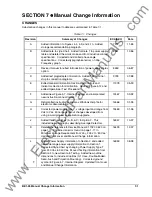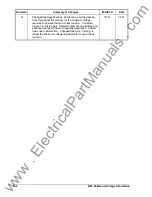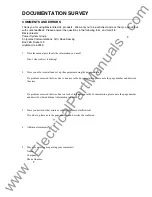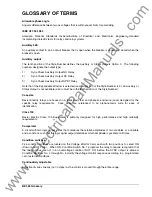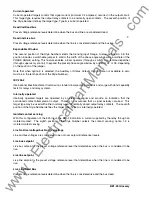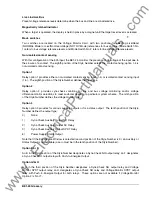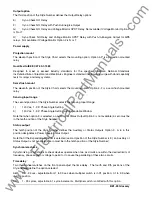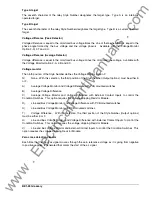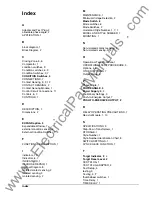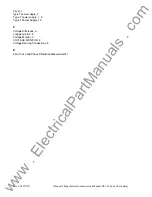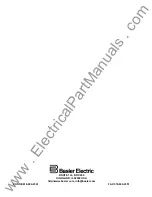
BE1-25 Glossary
GLOSSARY OF TERMS
Allowable phase angle
Angular difference between two ac voltages that is within preset limits for paralleling.
IEEE C37.90-1989
American National Standards Institute/Institute of Electrical and Electronics Engineers standard
incorporating dielectric tests for relays and relay systems.
Auxiliary 52b
An auxiliary contact to an ac circuit breaker that is open when the breaker is closed and closed when the
breaker is open.
Auxiliary output
The tenth position of the Style Number defines the Auxiliary or Status Outputs Option 3. The following
numbers designate the output type:
1)
Sync-Check Auxiliary Output NO Relay
2)
Sync-Check Auxiliary Output NC Relay
3)
Sync-Check Auxiliary Output SPDT Relay
Note that if the Expandable Window is selected (second position of the Style Number is 9), an Auxiliary or
Status Output is not available (a zero must be in the tenth position of the Style Number).
Case size
Basler Electric relays are housed in a fabricated steel and phenolic enclosure (case) designed for the
specific relay requirements. Case sizes are referenced to an alpha-numeric code for ease of
identification.
Class 100
Basler Electric Class 100 Equipment is primarily designed for high performance and high reliability
requirements.
Comparator
A circuit with two logic output states that compares the relative amplitudes of two variables or a variable
and a constant, such that the logic signal output determines which amplitude is greater at all times.
Condition switches
Five condition switches are located on the Voltage Monitor Card, each with two positions to select ON
(Down) and OFF (Up). When ON, Condition Switch No. 1 programs the relay to require recognition that
the line and bus are not in an overvoltage condition (NOT OV) before the SYNC output is allowed.
Condition Switches No. 2 through No. 5 modify the voltage monitor response according to a programmed
set of external conditions.
Continuously adjustable
Adjustment varies linearly (not in steps) as the control is moved through the entire range.
www
. ElectricalPartManuals
. com












